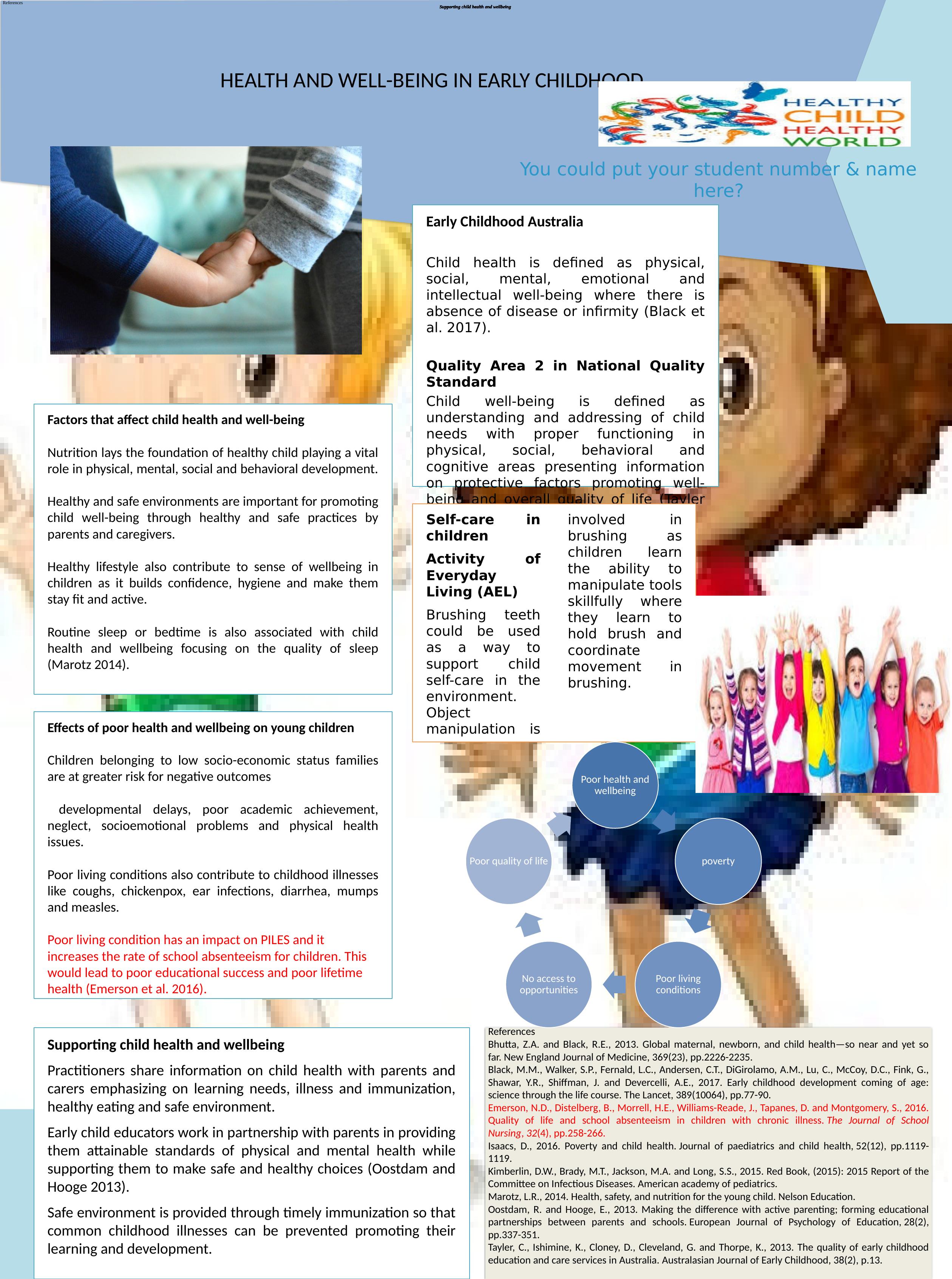Supporting Child Health and Wellbeing: Factors, Effects, and Strategies
1 Pages785 Words208 Views
Added on 2023-06-10
About This Document
This article discusses the various factors that affect child health and wellbeing, including nutrition, safe environments, healthy lifestyles, and routine sleep. It also explores the effects of poor health and wellbeing on young children, such as developmental delays, poor academic achievement, and physical health issues. Finally, the article provides strategies for supporting child health and wellbeing, including sharing information with parents and carers, working in partnership with parents, and providing a safe environment through timely immunization.
Supporting Child Health and Wellbeing: Factors, Effects, and Strategies
Added on 2023-06-10
ShareRelated Documents
End of preview
Want to access all the pages? Upload your documents or become a member.
Essay on plan on Children Wellbeing and Wellness
|6
|905
|128
The Health and Well-Being of Children
|11
|3347
|420
THE EARLY CHILDHOOD
|12
|3354
|39
Wellness and Wellbeing of Early Childhood Educators
|15
|1084
|125
Early Childhood Education and Care Resource Booklet
|9
|1199
|344
Early Childhood Education and Care Research Paper 2022
|11
|2950
|18

